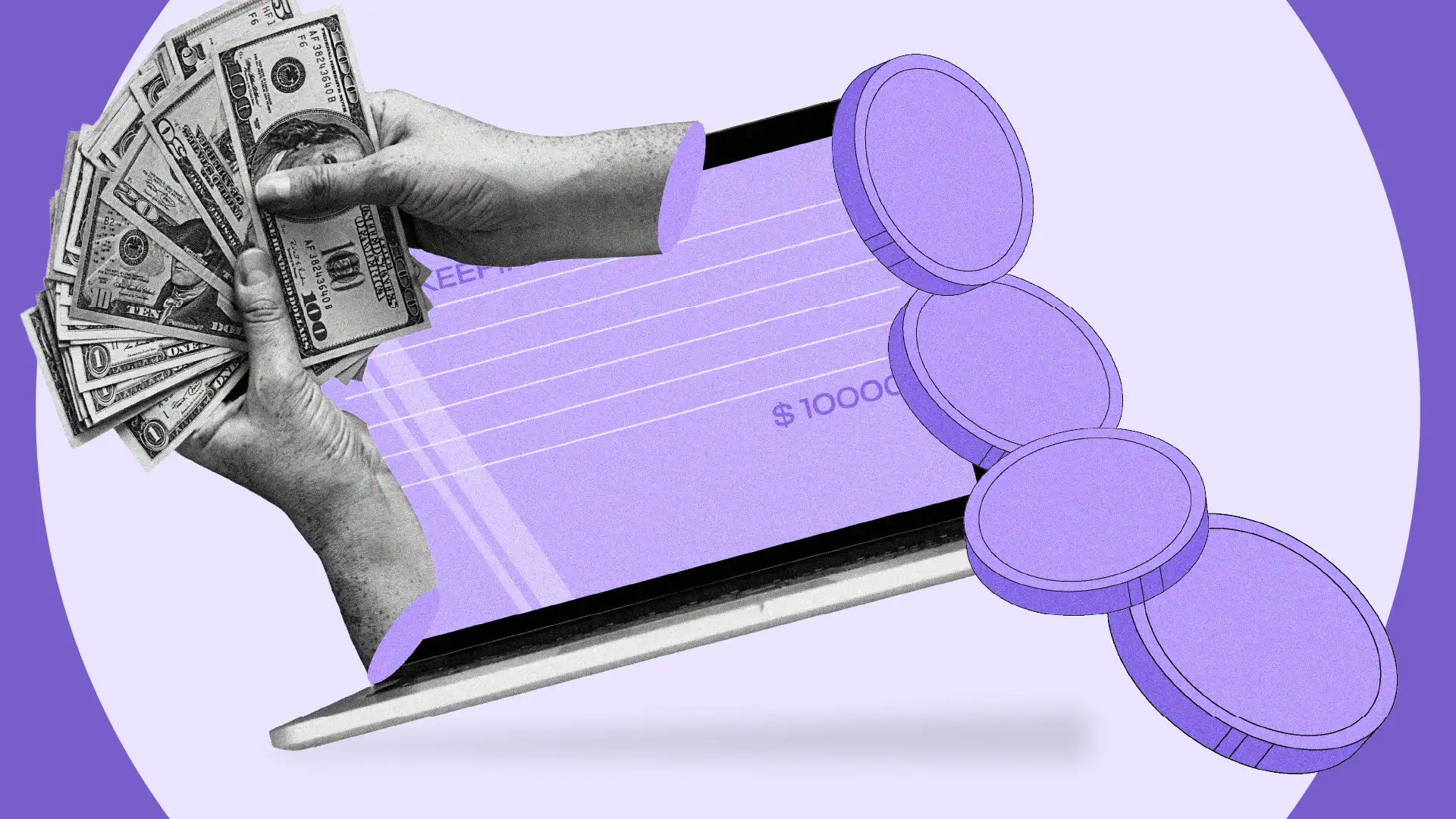Introduction – Why Declare Cryptocurrencies in 2025
The year 2025 marks a turning point for cryptocurrency taxation 2025 in Italy. The new rules introduced by the Italian Revenue Agency make it increasingly important to understand how to declare cryptocurrencies correctly and transparently. Until a few years ago, many investors ignored these obligations. Today, however, tax authorities are closely monitoring even small digital portfolios.
Anyone who owns Bitcoin, Ethereum, or other virtual currencies must know that simply holding them may require a declaration, even if no profit has been made. Failing to declare your cryptocurrencies can lead to heavy penalties, especially if the funds are held on foreign exchanges or in private wallets not registered in Italy.
In this context, the RW crypto form becomes essential: it is the section of the tax return dedicated to monitoring foreign financial assets. In addition, those who earn profits from sales must pay attention to the calculation of cryptocurrency capital gains, as these profits are subject to a 26% substitute tax (with the option for reassessment at 18%).
Knowing the rules, limits, and deadlines is the first step to avoiding mistakes. The platform Bit 60 Lexipro offers practical tools to analyze crypto transactions and generate tax reports compliant with the new Italian regulations. Thanks to these solutions, declaring your cryptocurrencies is no longer a complicated path but a simple and secure process.
In this comprehensive guide, we will explore everything you need to know to correctly declare cryptocurrencies in 2025—from how the RW form works to the calculation of capital gains. The goal is to protect your capital and stay compliant with tax authorities.
Cryptocurrency Taxation 2025: What Really Changes
In 2025, cryptocurrency taxation in Italy enters a new phase. After years of uncertainty, lawmakers have established clearer rules for those who own, buy, or sell cryptocurrencies. The main change concerns the tax on cryptocurrency capital gains and the obligation to declare cryptocurrencies systematically, even for small amounts.
Until 2024, capital gains were taxed at 26%, but there was an exemption threshold of up to 2,000 euros. Starting in 2025, this threshold no longer exists — even small profits must be declared. In addition, a fiscal revaluation option has been introduced, allowing taxpayers to pay a substitute tax of 18% on the value of cryptocurrencies held as of January 1, 2025. This measure allows individuals to “update” the value of their assets and reduce future taxation in case of sale.
Another significant change concerns fiscal monitoring. All taxpayers who hold cryptocurrencies on foreign exchanges or digital wallets must include them in the RW crypto form. The goal is to ensure transparency and traceability of digital assets, especially during inspections by the Italian Revenue Agency.
Here are the key points of the new rules
- 26% tax rate on capital gains from sales or conversions into fiat currency.
- 18% revaluation option to update the value of cryptocurrencies as of January 1, 2025.
- Elimination of the €2,000 threshold: every gain must be declared.
- Mandatory completion of the RW form for those holding cryptocurrencies on foreign platforms.
- Penalties ranging from 3% to 15% for those who omit or incorrectly declare their digital assets.
Let’s look at a practical example: if in 2025 an investor sells Ethereum for €10,000 and the average purchase cost was €7,000, the €3,000 capital gain will be taxed at 26%. However, if the investor opted for the 18% revaluation, the purchase value would be updated to the new price, thereby reducing the taxable amount.
The rules may seem complex, but tools like Bit 60 Lexipro make it possible to automatically calculate the taxes owed and generate up-to-date tax forms. This helps avoid mistakes and saves valuable time.
In the next chapter, we will see who must declare cryptocurrencies and in which cases filling out the RW form becomes mandatory.
Who Must Declare Cryptocurrencies and When to Do It
Not all investors know that the obligation to declare cryptocurrencies does not apply only to those who make profits. Even those who simply hold digital coins in a wallet or on a foreign exchange must fill out the RW crypto form. The goal of the Italian Revenue Agency is to monitor capital flows and prevent tax evasion.
In 2025, anyone who owns cryptocurrencies — even small amounts — must include them in their tax return. It doesn’t matter if you have never sold or converted them into euros: merely holding digital assets can trigger a fiscal monitoring requirement. This applies both to individuals residing in Italy and to holders of accounts or wallets abroad.
When to Declare Cryptocurrencies
Cryptocurrencies must be declared every year in the tax return referring to the previous year. For example, if you hold crypto in 2024, you must include them in the 2025 tax return. The main deadlines are:
- Form 730: by September 30, 2025.
- Personal Income Tax Return (PF): by October 31, 2025.
The section to complete is the RW crypto form, which concerns foreign financial assets. Even if your cryptocurrencies do not generate income, you must declare them to comply with monitoring rules. The €5,000 threshold (quadro RW cryptocurrencies €5,000) is not a real exemption, but rather a limit below which the risk of penalties for omission is reduced.
A common mistake is thinking that only those who have made sales or exchanges must declare. In reality, even those who keep their coins on foreign exchanges such as Binance, Kraken, or Coinbase must report them. This is because these platforms are considered “foreign accounts” for tax purposes.
To make the process easier, Bit 60 Lexipro provides a feature that imports transactions from multiple exchanges and automatically generates the figures to enter in the Italian tax forms. In just a few minutes, you can see whether you exceed the monitoring threshold and how much you need to declare.
In the next chapter, we’ll look in detail at how to declare cryptocurrencies in 2025, with a step-by-step guide and a practical example of how to fill out the forms.
How to Declare Cryptocurrencies: A Practical Step-by-Step Guide
Declaring cryptocurrencies correctly in 2025 isn’t complicated, but it does require attention. With the new rules on cryptocurrency taxation 2025, it’s essential to follow a clear and precise method. Here’s a step-by-step guide to avoid mistakes and properly complete both the RW crypto form and the RT section dedicated to cryptocurrency capital gains.
1. Gather Transaction Data
The first step is to collect all the information about your investments: purchases, sales, transfers between wallets, and earnings from staking or airdrops. These data are necessary to calculate the value of your cryptocurrencies and any profits made. If you use multiple platforms, keep the annual reports from each.
The Bit 60 Lexipro platform can automatically import data from exchanges like Binance, Coinbase, Kraken, and Bitget, generating a ready-to-use fiscal summary for your tax return. This minimizes the risk of errors or omissions.
2. Calculate the Value as of December 31
For filling out the RW form, you must indicate the total value of the cryptocurrencies you owned on December 31 of the relevant year. The value must be converted into euros using the official exchange rate from the European Central Bank.
For example, if on December 31, 2024, you held 0.5 Bitcoin and 2 Ethereum, you must sum their euro values at that day’s rate. This amount represents the total to report in the RW form.
3. Fill Out the RW Crypto Form
The RW crypto form is used for fiscal monitoring of foreign assets. Here’s how to fill it out correctly:
- Column 3 – Foreign Country: enter code “XX” if the crypto is held on multiple international exchanges.
- Column 4 – Activity Code: use code “14” for foreign financial activities.
- Column 5 – Value: indicate the value in euros as of December 31.
If you own multiple wallets or platforms, it’s advisable to declare them separately for full transparency. Otherwise, you can report a cumulative value as long as it is properly documented.
4. Declare Capital Gains in the RT Section
The RT form is dedicated to other types of financial income, such as capital gains from selling or converting crypto into euros. Here, you must report the profits made during the year by calculating the difference between the selling price and the average purchase cost.
For example, if you sold cryptocurrencies for €8,000 that were purchased for €5,000, the €3,000 capital gain is subject to a 26% substitute tax. If you opted for the 18% revaluation, the initial value will be updated, reducing the total taxable amount.
5. Keep Your Documentation
It’s important to keep all transaction records for at least five years. This includes account statements, exchange reports, and purchase receipts. In the event of an audit by the Italian Revenue Agency, these documents will be essential to prove the accuracy of your declaration.
Here’s a summary table to help you:
| Step | Description | Form |
| 1. Data Collection | Import transactions from exchanges or wallets | – |
| 2. Value as of 31/12 | Convert to euros using ECB rate | RW Form |
| 3. Fiscal Monitoring | Report values of held crypto | RW Form |
| 4. Capital Gains Calculation | Report profits from sales | RT Form |
| 5. Documentation | Keep records for 5 years | – |
By following these steps, declaring cryptocurrencies in 2025 becomes an organized and safe process. In the next chapter, we’ll take a closer look at the RW crypto form and the significance of the €5,000 threshold.
RW Crypto Form: Monitoring and Reference Thresholds
The RW crypto form is one of the most important sections of the tax return for anyone who holds digital assets. It serves to notify the Italian Revenue Agency of the holding of foreign financial assets, such as cryptocurrencies kept on non-Italian exchanges or in private wallets. It is not a tax, but a monitoring requirement that ensures transparency and traceability.
Many investors think the RW form applies only to those with large sums, but that’s not the case. Even modest amounts must be reported. The €5,000 threshold (often referred to as RW crypto form €5,000) does not exempt you from filing: it merely indicates a limit below which the likelihood of penalties or in-depth audits is reduced.
When to Complete the RW Form
You must complete the RW form whenever you hold cryptocurrencies on foreign platforms, even if you have no capital gains. If your crypto is stored in a private wallet, that must also be reported, as it is considered a foreign account for tax purposes.
- Foreign exchanges: such as Binance, Kraken, KuCoin, or Bybit, fall among the assets to be declared.
- Private wallets: such as MetaMask, Ledger, or Trust Wallet, if managed by Italian residents, must be included.
- Italian exchanges: if regulated and registered in Italy, they do not require the RW form, but gains remain taxable.
How to Calculate the Amount to Report
In the RW form you must indicate the total value of your cryptocurrencies as of December 31 of the relevant year, expressed in euros. If you hold multiple cryptocurrencies, you can either sum them or list them separately, depending on how clear your tax documentation is. It’s important to use the ECB exchange rate for the reference date to avoid discrepancies.
For example, if you hold 0.2 Bitcoin (BTC) and 3 Ethereum (ETH), you must calculate their euro value on December 31 and report it as the overall amount. If the total exceeds €5,000, it is essential to declare it to avoid penalties.
Penalties for Omissions or Errors
Failing to correctly complete the RW form may result in fines ranging from 3% to 15% of the undeclared value. For accounts in non-cooperative countries, the penalty can reach up to 30%. If the mistake is corrected voluntarily through ravvedimento operoso (voluntary correction), penalties can be significantly reduced.
A practical tip: it’s better to declare even amounts below €5,000 to demonstrate transparency and prevent doubts from the tax authority. The Italian Revenue Agency may request documentation even for small sums.
The Bit 60 Lexipro platform can automatically calculate the amount to enter in the RW form, generating a summary aligned with official instructions. This way, even those with multiple wallets or different exchanges can complete the return accurately and quickly.
In the next chapter, we’ll delve into how cryptocurrency capital gains are calculated and taxed, with concrete examples and step-by-step explanations.
Cryptocurrency Capital Gains: How They Are Calculated and When They Are Paid
One of the most important aspects of cryptocurrency taxation 2025 concerns cryptocurrency capital gains. These are the profits earned when you sell, trade, or convert your digital coins into euros. Even the exchange between two different cryptocurrencies can generate a taxable capital gain if the market value at the time of the swap is higher than the purchase cost.
How Capital Gains Are Calculated
To know how much you need to declare, calculate the difference between the selling price and the purchase cost of your cryptocurrencies. This calculation follows the weighted average cost (WAC) method — a weighted average of all your purchase prices.
The formula is simple:
Capital Gain = Selling Price – Average Purchase Cost
Here’s a practical example:
- You bought 1 Bitcoin for €25,000.
- In 2025, you sell it for €35,000.
- Your capital gain is €10,000.
On these €10,000, you must pay a substitute tax of 26%, which equals €2,600. However, if you opted for the 18% revaluation, the purchase value will be updated, reducing the taxable base and therefore the total tax due.
When the Tax Must Be Paid
The tax on capital gains must be paid when filing your annual tax return, together with other financial income. Cryptocurrency profits are reported in the RT section, dedicated to miscellaneous financial income. It’s essential to include all the operations made during the year, even if you incurred losses on some of them.
If you recorded losses (capital losses), you can use them to offset future gains within the following four years. This mechanism allows you to reduce your overall taxation over time.
Be Careful with “Crypto-to-Crypto” Transactions
Many investors don’t realize that exchanging one cryptocurrency for another can also be a taxable event. If you sell Bitcoin to buy Ethereum, and the value of your BTC has increased compared to its purchase price, you must still declare the capital gain. The same rule applies to exchanges with stablecoins such as USDT or USDC.
A common mistake is thinking that taxation applies only when converting to euros. In reality, the law considers any transaction that generates an economic benefit as taxable, even if no fiat withdrawal occurs.
Capital Gains and Monitoring
Cryptocurrency capital gains must always be declared, even if your coins are stored on foreign exchanges. The Italian Revenue Agency can obtain information from major intermediaries through international cooperation agreements. Therefore, it’s essential to keep detailed, up-to-date transaction reports.
The Bit 60 Lexipro platform offers an automatic capital gain calculator: by entering your yearly transactions, the system calculates your net profit and generates the amount to report in the RT section. This makes the entire process simple and error-proof.
In the next chapter, we’ll discuss the 18% revaluation — an option introduced for 2025 that can help reduce taxation and make cryptocurrency management more efficient.
18% Revaluation and 2025 Tax Strategy
One of the most talked-about changes in cryptocurrency taxation 2025 is the introduction of the so-called 18% revaluation. This option, introduced by the Italian Budget Law, allows taxpayers to update the value of their cryptocurrencies and pay a reduced substitute tax. It’s a measure that can offer significant fiscal advantages but should be evaluated carefully.
What the 18% Revaluation Is
The revaluation allows taxpayers to set the value of their cryptocurrencies as of January 1, 2025 as the new fiscal cost basis, by paying a substitute tax of 18% on that value. In practice, it “resets” the gains accumulated up to that date, meaning that future capital gains will be calculated only on the difference from the revalued value.
For example, if you purchased Bitcoin at €20,000 and its value on January 1, 2025, is €40,000, you can pay 18% on €40,000 (that is, €7,200). This way, if you later sell it for €45,000, the taxable capital gain will be calculated only on the €5,000 difference — not on the original €25,000 gain.
When It’s Worth Choosing This Option
The revaluation is particularly beneficial for those with large unrealized gains — that is, increases in value that haven’t yet been cashed out. If your cryptocurrencies have grown significantly over time, paying 18% now may be more advantageous than paying 26% later. However, if you expect prices to fall or hold highly volatile assets, waiting might be wiser.
It’s important to remember that the revaluation applies to entire categories of cryptocurrencies — you can’t revalue just part of your portfolio. Moreover, once carried out, it cannot be reversed. That’s why it’s advisable to make this decision with the help of a tax consultant or using simulation tools like those offered by Bit 60 Lexipro.
How to Perform the Revaluation
To apply for revaluation, you must:
- Determine the total value of your cryptocurrencies as of January 1, 2025, using official market prices.
- Pay the substitute tax of 18% by the deadline set for the annual tax return.
- Indicate the transaction in your tax declaration, in the RW and RT sections, as a “revaluation of foreign financial assets.”
This process allows you to reduce future tax pressure and regularize your position in a transparent and compliant way under the new Italian rules. However, it’s not mandatory — you can still declare your capital gains under the regular 26% rate if you prefer.
The revaluation also represents a sign of maturity in the Italian cryptocurrency market. It allows investors to plan more strategically, aligning crypto taxation with that of other financial instruments.
In the next chapter, we’ll look at the most common mistakes in declaring cryptocurrencies and how to avoid them to remain fully compliant with Italian tax regulations.
Common Mistakes in Declaring Cryptocurrencies
With the new rules on cryptocurrency taxation 2025, many taxpayers are trying to comply but still make mistakes that can lead to penalties or tax inspections. Declaring your cryptocurrencies correctly is just as important as managing them securely. Here are the most common mistakes and how to avoid them.
1. Failing to Complete the RW Form
The first mistake is not completing the RW crypto form. Even if you haven’t sold or converted your assets into euros, you must report cryptocurrencies held on foreign exchanges or in private wallets. Omitting this step can result in fines ranging from 3% to 15% of the undeclared value. It’s always best to declare even small amounts to show transparency.
2. Confusion About the Value to Report
Many people report the purchase value instead of the market value as of December 31. The amount to include in the RW form must be the end-of-year market value, calculated using the official European Central Bank exchange rate. Reporting incorrect values can lead to inconsistencies during audits.
3. Ignoring “Crypto-to-Crypto” Capital Gains
Another common mistake is failing to consider cryptocurrency capital gains resulting from exchanges between digital coins. Even if you don’t convert to euros, exchanging Bitcoin for Ethereum or other crypto can generate a taxable gain. The Italian Revenue Agency considers this a taxable event and therefore it must be included in the RT form.
4. Not Keeping Documentation
Declaring isn’t enough — you must also keep records. The Revenue Agency can request proof of your transactions for up to five years. You should retain:
- Exchange and wallet reports;
- Purchase and sale receipts;
- Statements in both euros and cryptocurrencies.
Keeping your records organized protects you in case of audits and simplifies future declarations.
5. Ignoring the €5,000 Threshold
Many believe that amounts under €5,000 don’t need to be declared. In reality, the €5,000 threshold (RW crypto form €5,000) is not an exemption but a reference point. Even below this figure, it’s recommended to declare to avoid suspicion or misinterpretation by the tax authorities.
6. Forgetting to Offset Capital Losses
Losses (capital losses) from certain operations can be used to offset future gains within the next four years. Failing to do so means paying more tax than necessary. That’s why it’s useful to use platforms like Bit 60 Lexipro, which automatically calculate losses and possible offsets.
7. Not Staying Updated on New Rules
Tax regulations on cryptocurrencies change frequently. Information valid in 2023 may no longer apply in 2025. Following official sources and using professional tools like Bit 60 Lexipro is the best way to stay informed and avoid penalties for unintentional mistakes.
In the next chapter, we’ll explore some practical tips and useful tools to help you declare cryptocurrencies correctly, save time, and improve the accuracy of your tax data.
Practical Tips and Tools for Correct Cryptocurrency Declarations
With increasing attention from tax authorities toward the crypto world, it’s essential to adopt good practices for managing your cryptocurrency declaration safely and efficiently. Below are some practical tips to comply with Italian regulations and minimize the risk of errors or penalties.
1. Keep an Organized Record of Transactions
Every transaction, even the smallest one, can be relevant for tax purposes. It’s a good habit to keep track of:
- the purchase and sale dates of cryptocurrencies;
- the euro values at the time of each transaction;
- monthly or annual reports generated by exchanges;
- transfers between personal wallets and foreign platforms.
An organized record makes it easier to calculate cryptocurrency capital gains and correctly complete the RW and RT forms.
2. Use Tax Support Software
Today, there are tools that automate most of the work. The Bit 60 Lexipro platform is one of the most reliable tools for analyzing crypto transactions and generating reports compliant with Italian regulations. It allows you to:
- import transactions from various exchanges and wallets;
- automatically calculate capital gains and losses;
- generate a summary ready for your tax declaration.
Using such software greatly reduces the risk of errors and ensures compliance with the new cryptocurrency taxation 2025 rules.
3. Declare Even Small Amounts
Even if the value of your portfolio doesn’t exceed €5,000, declaring your cryptocurrencies in the RW form remains a prudent choice. It demonstrates transparency and protects you in case of future audits. The Italian Revenue Agency may request information even for small amounts, so it’s always better to stay compliant.
4. Consult an Experienced Advisor
If you have a complex portfolio or engage in regular trading, it may be helpful to rely on a tax advisor specialized in cryptocurrencies. A professional can help you:
- verify the correct tax rate (26% or 18%);
- manage revaluations and the offsetting of losses;
- optimize your fiscal position in the long term.
The support of an expert, combined with digital tools like Bit 60 Lexipro, provides the ideal combination for safe and accurate declarations.
5. Stay Updated on Regulations
Tax rules on cryptocurrencies in Italy are constantly evolving. Staying informed is essential to avoid mistakes. Follow the official channels of the Italian Revenue Agency and consult reliable sources or specialized portals to stay up to date.
In the next and final chapter, we’ll summarize how to best approach your cryptocurrency declaration in 2025 with a transparent, secure, and fully compliant strategy.
Conclusion – Toward Clear and Sustainable Cryptocurrency Taxation
The declaration of cryptocurrencies is no longer an optional choice but an essential part of financial management for anyone investing in the digital world. The new rules introduced with cryptocurrency taxation 2025 aim to make the system more transparent, fair, and aligned with traditional financial instruments.
Filling out the RW crypto form and correctly declaring cryptocurrency capital gains not only helps you avoid penalties but also demonstrates responsibility and compliance with tax obligations. In a rapidly growing market, fiscal clarity benefits everyone — investors, professionals, and institutions alike.
Today, there are tools that make the process significantly easier. The Bit 60 Lexipro platform is a concrete example of how technology can make taxation more accessible. With automated reports, tax calculations, and regulatory updates, even those without prior experience can easily manage their crypto-related tax obligations.
The future of taxation in Italy is moving toward greater digitalization and accuracy. Knowing how to declare cryptocurrencies correctly means being prepared for a modern tax system, where transparency and accuracy are integral parts of investing.
In conclusion, the most important advice is simple: stay informed, declare everything, and use reliable tools. This is the only way to experience the world of cryptocurrencies with peace of mind and build a solid, secure, and fully compliant financial path under Italian law.





























